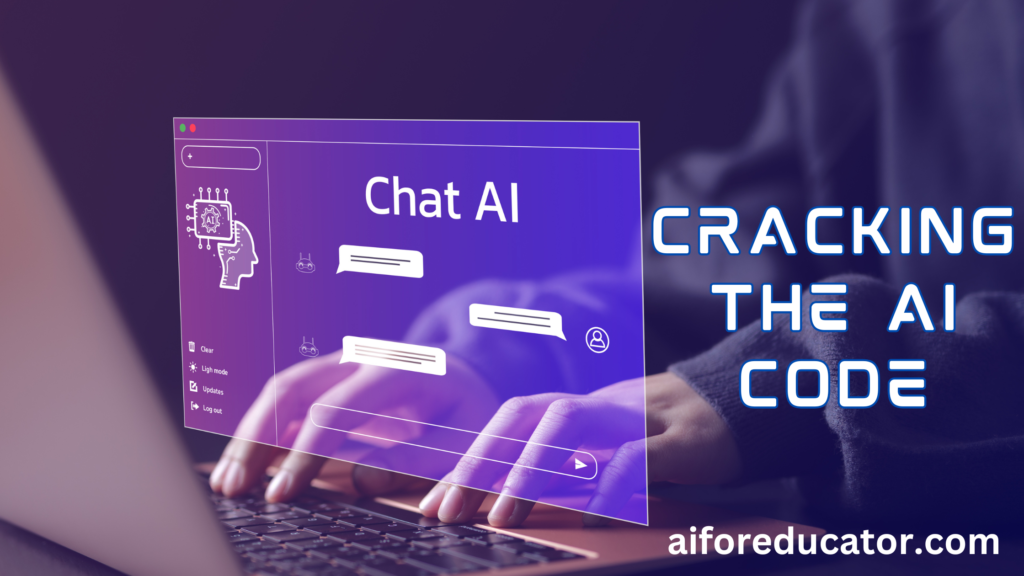
As educators, we’re always looking for innovative methods to engage students and make our teaching more impactful. With AI tools like ChatGPT, we might have stumbled upon a revolutionary way to create high-quality educational content. But here’s the catch—like every powerful tool, its effectiveness depends on how skillfully we use it. At the heart of this lies the art of crafting the perfect prompts. Let’s dive into how to unlock this potential while questioning whether it truly lives up to the hype.
The Mystery of Prompt Engineering: What Makes It Click?
Crafting prompts for ChatGPT isn’t as simple as throwing a vague request and expecting magic. The beauty lies in the detail.
Specificity: The Game-Changer
The secret sauce to getting ChatGPT to work wonders? Specificity. Don’t just say, “Give me a lesson plan.” Instead, try: “Create a 45-minute lesson plan for 10th-grade students on the causes of World War I, including three interactive activities and a 5-minute assessment.” The specificity here is like handing the AI a GPS—it knows exactly where to go and what to deliver.
But the suspense remains: how specific is too specific? Push it too far, and you might end up stifling creativity. Too broad, and it might underdeliver. That fine balance is the real puzzle to solve.
Role-Play: The Secret Ingredient
Want ChatGPT to deliver content like a pro? Ask it to “become” one. For instance, you could say, “You are an experienced high school history teacher. Write a captivating introduction to a lesson on the Civil Rights Movement that will resonate with 11th-grade students.”
This role-play trick adds depth and personality to the output. But here’s the twist—AI’s role-playing abilities often depend on your clarity. Vague roles lead to mediocre results, leaving you questioning whether you’re leading the AI or it’s leading you.
The Simplified Genius of ‘Explain It Like I’m…’
What if your students aren’t getting a concept? The “Explain it like I’m…” strategy can be a lifesaver. For example: “Explain photosynthesis like I’m a 7th grader with zero prior knowledge of biology.”
But here’s the dilemma—while simplification is an art, oversimplification risks losing nuance. Does ChatGPT strike the right balance? That’s for you to decide after careful review.
Enhancing Quality: Can AI Make Learning Magical?
Sensory Immersion: Transporting Students to Another World
Imagine saying, “Describe a day in ancient Rome, highlighting the sights, sounds, and smells a 6th grader would find interesting.” Suddenly, the dry pages of history could transform into a living, breathing world.
But can ChatGPT consistently weave this magic, or does it fizzle out after a while? That question might keep you guessing.
Multiple Perspectives: Fuel for Critical Thinking
What if you prompt: “Provide three different perspectives on the Industrial Revolution for a 9th-grade class”? You’re not just feeding facts but teaching students to think critically.
Yet, here’s the concern—AI can present perspectives, but can it discern biases? Without your expert eye, you might unintentionally teach half-truths.
Iterative Refinement: The Key to Perfection
Never accept the first draft. Ask ChatGPT to refine its responses with follow-ups like: “Make this explanation more engaging for teenagers by adding pop culture references.”
But how much time will this back-and-forth take? Could you have crafted the content faster yourself? These are the questions every educator must grapple with when working with AI.
The Ethics Enigma: Friend or Foe?
With great power comes great responsibility. AI tools like ChatGPT should be used as a support system, not as a crutch. Always review its output for factual accuracy and relevance before presenting it to students.
Additionally, think about this: should students know how AI-generated content is created? By exposing them to these tools, we could help them become more critical and discerning learners.
Mastering prompt techniques can undoubtedly help educators create exceptional content. But is this AI marvel the teaching revolution we’ve been waiting for, or just another fleeting trend? Perhaps the answer lies in how we choose to wield this tool—responsibly, creatively, and with a clear vision for what truly benefits our learners.
The classroom may never be the same again, but will it truly be better? Only time will tell.

Leave a Reply